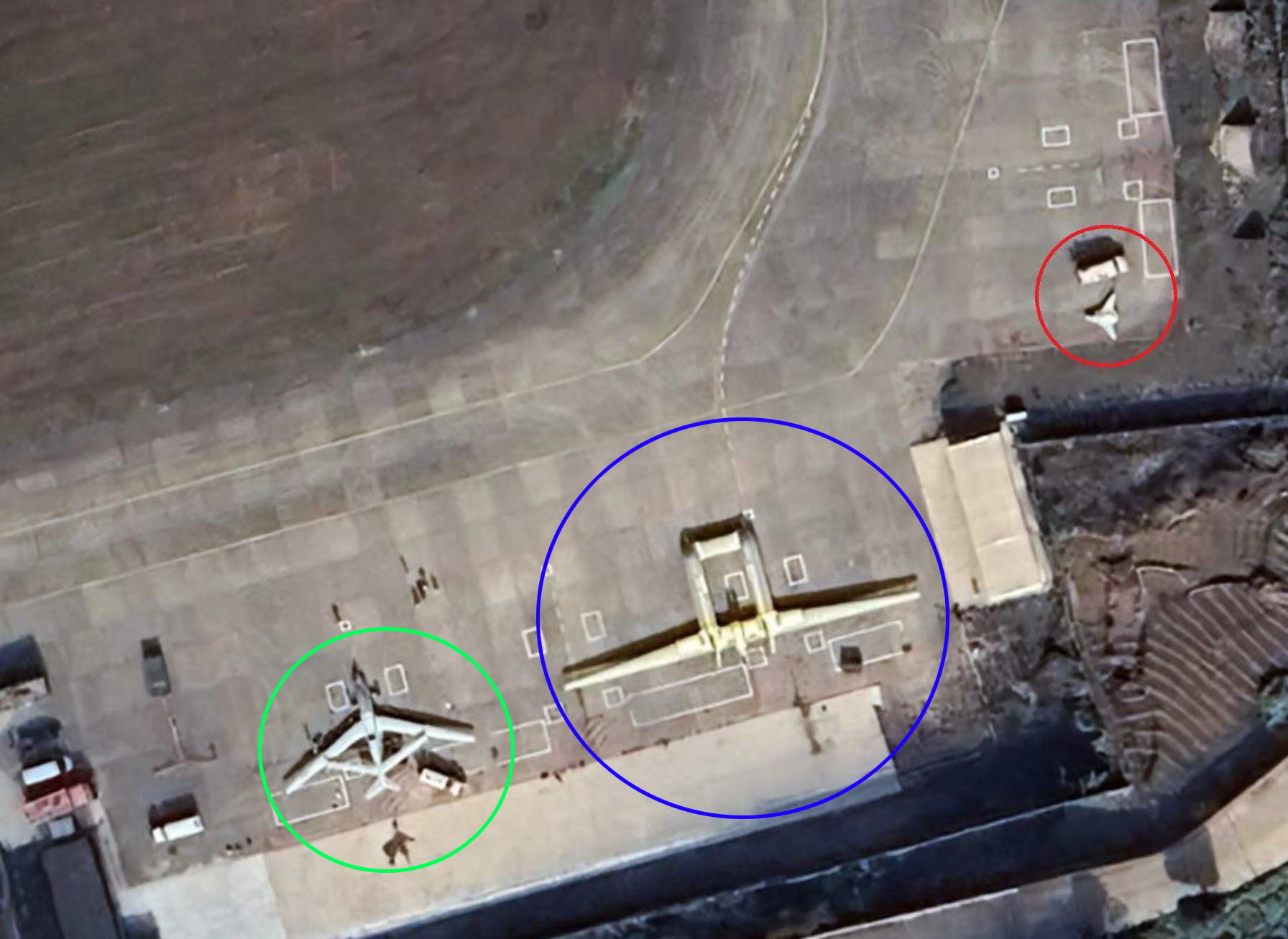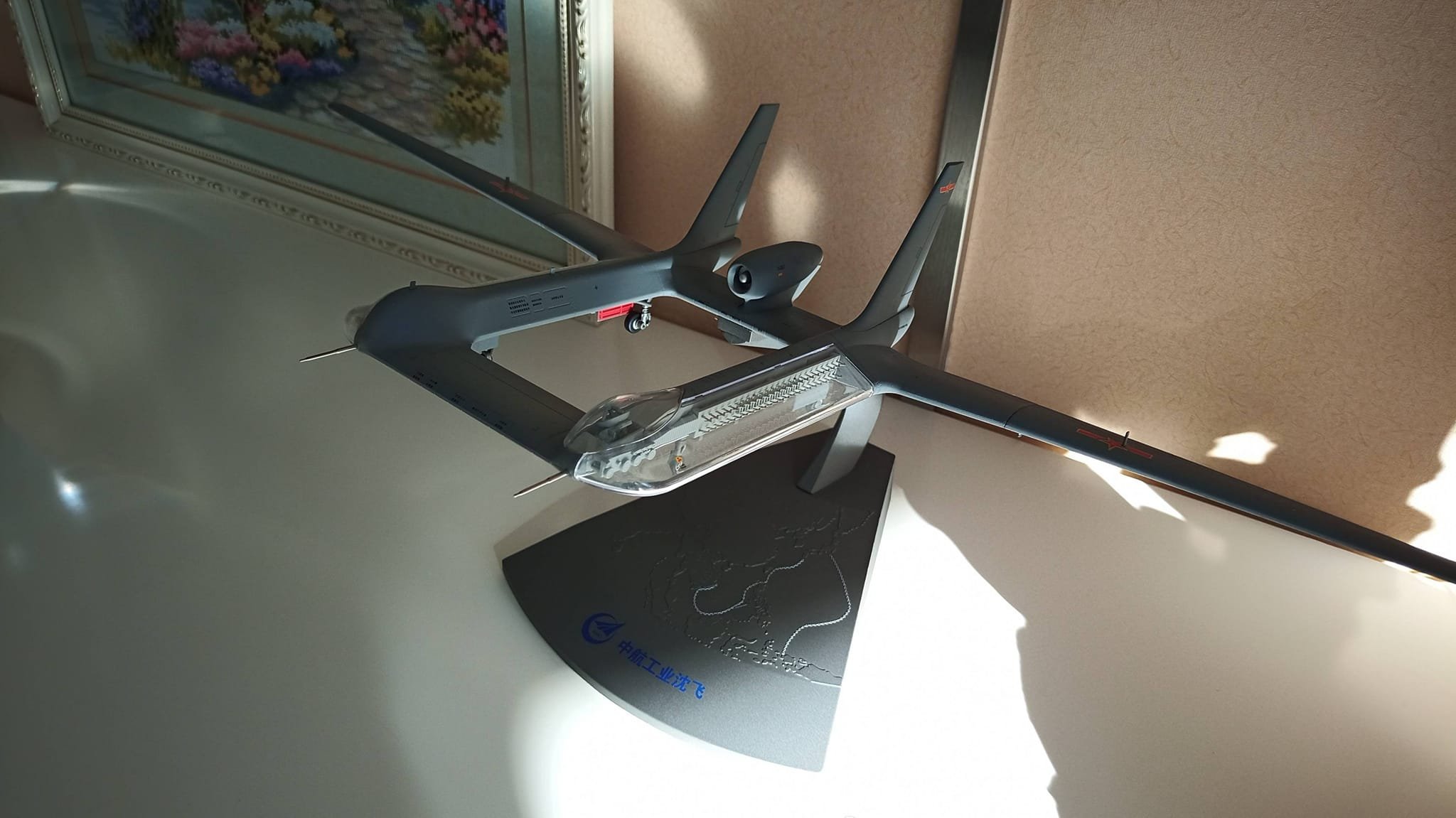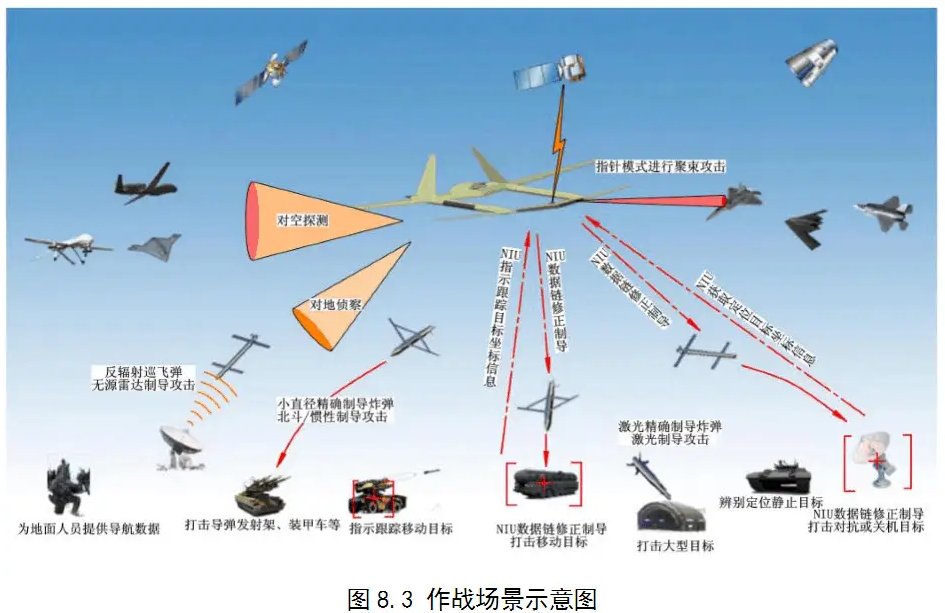The next war – whenever that takes place – will see China incorporating unmanned systems with manned assets to counter its foes in what is known as ‘intelligentized warfare.’ A close look at how this type of warfare will play out.
China’s ‘intelligentized warfare’ concept of incorporating unmanned systems in sharing data and battlefield pictures with manned assets in a deep, networked mesh seems to be taking shape with the emergence of a picture of its Divine Eagle Airborne Warning and Control System (AWACS) unmanned aerial vehicle (UAV).
The massive drone is seen alongside the WZ-7 Soaring Dragon reconnaissance and surveillance drone and an unidentified stealth unmanned combat aerial vehicle (UCAV) in a satellite picture.
It hints at how the uncrewed platforms would offer both increased redundancy, greater endurance, and more technology alongside conventional piloted aircraft in a military campaign.
It is not that China has developed these systems for the lack of a conventional military, like Iran. It has all the attributes of a large defense industrial base, a homegrown army, a navy, and an air force free of foreign dependence.
A massive space program fits into this larger scheme of things, where military satellites would support all functions for its missiles, drones, and aircraft: from navigation, direction, and targeting to surveillance.
The revelation of the Divine Eagle in the satellite picture also broadly validates earlier EurAsian Times analyses about the subject, which had touched upon the emerging idea of the ‘intelligentized warfare’ concept of operations (CONOPS).
What is Intelligentized Warfare?
Speaking at a seminar organized by Xinhuanet in early July 2021, Lu Jun, Chief Designer of China’s KJ-2000 early warning aircraft, and Cui Jixian, the Deputy Executive Designer of the KJ-500 early warning aircraft, talked about future airborne warning roles to be distributed between various small and big aircraft and assets.

“A future Airborne Warning and Control System (AWACS) will likely not be one single early warning aircraft, but a cluster of platforms that can accomplish different missions and build an information network,” he said. While individual assets like aircraft, submarines, or tanks can deal with their counterparts in war, the key is to integrate all space, aerial, ground, surface, and underwater systems for “joint combat capability.”
“Future AWACS will definitely become an information network system that includes not only one single aircraft but a cluster of platforms that can either operate together or alone. These platforms will play their specially designed roles based on the demands of combat missions, with the final goal being winning the war,” Cui said, noting that both large and small AWACS platforms are future trends.
A manifestation of this emphasis on information sharing is in China’s J-20 ‘Mighty Dragon’ stealth fighter, as its designer Yang Wei calls the concept of maneuverability “outdated.”
The J-20 stealth aircraft had been rightfully criticized for lagging in kinematic performance of speed, nimbleness, and payload, but that is never what the jet was designed for and purported to fight in the first place.
The EurAsian Times had reported how the J-20, combining its stealth, radar-reflecting Luneburg Lens (on the rear underside), advanced avionics, Electronic Warfare (EW) and jamming suites, and ultra-long-range air-to-air missiles like the PL-15 (range 300 km), will slip past fighter screens and knock out vulnerable enemy air assets, in a classic ‘hit-and-run’ role.
These will be transport, Airborne Early Warning (AEW), and air-to-air refueling planes, the loss of which degrades an air force’s logistical and surveillance capability. This is also adopted in China’s plans to keep the US Navy at bay in the Western Pacific.
Just noticed that GE has updated the photo of Anshun Huangguoshu Airport. On the GAIC apron, in addition to the familiar WZ-7 and Divine Eagle UAVs, there's a small stealth drone that I don't recognize, about 4 m long, wingspan about 5.4 m. The photo was taken on 11/27/2023
1/4 pic.twitter.com/piGxiOra9K— Q (@foolsball) February 20, 2024
In a paper in the Chinese military aviation journal Acta Aeronautica Sinica in July 2020, Wei gave the most extensive insight into the technological thinking driving the doctrine.
Enhanced situational awareness is at the heart of this concept, aimed at providing a manned operator an overall battlefield picture to assist in making optical tactical decisions.
This is achieved by combining data gathered from multiple sensors both around an aircraft and other manned, unmanned, ground and space platforms, known in scientific terms as ‘sensor fusion’.
The US pioneered the technology with the F-35, which, despite being a troubled, expensive, and accident-prone stealth jet, has nearly unparalleled data processing capability aided by nearly three million lines of software code.
Divine Eagle AWACS Drone in an Intelligentized War Scenario
The photo shows three drones: the one circled in green is the WZ-7 reconnaissance drone, the large UAV with the twin booms circled in blue is the Divine Eagle, and the smaller flying-wing-type drone could possibly be a CS-500T UCAV. Together with the GJ-11, it represents the next generation of China’s UCAVs.

The Divine Eagle carries two large radar arrays on its two tail booms, with the biggest upside being long endurance owing to the elimination of limitations imposed by human endurance. Support platforms like the AWACS are sensitive targets and would be actively sought by the enemy. Replacing both the aircraft and the highly trained human crew can be a costly affair.
Indeed, the People’s Liberation Army Air Force (PLAAF) will also have both manned AWACS platforms in its inventory, like the KJ-500 and the KJ-2000, with the Divine Eagle (DE) taking roles in sectors requiring extended and prolonged detection. This is especially true in highly contested aerial scenarios where the adversary commands comparable assets, and the chances of losing the AWACS are high, yet they can be afforded.
Neither is it likely that the DE would be fully autonomous to risk highly complex detection tasks to be performed on its own. Chinese planners will retain a significant degree of human control and oversight, at least until the algorithms, flight control protocols, and tactics are perfected.
Otherwise, the DE can perform straightforward tasks like simply relaying and alerting enemy aerial targets to friendly assets while safely operating from its own territory.
Other sophisticated missions, like controlling beyond-visual range (BVR) missiles like the PL-15 or the PL-20 after it is launched from jets like the J-16 or J-20, may possibly be still retained by the manned KJ-2000 or the KJ-500.

The WZ-7 meanwhile (analyzed in this previous EurAsian Times article) is likely to sweep up electromagnetic information on radar emissions and enemy ground positions by flying at high speeds through electronic intelligence (ELINT) and electro-optical (EO) sensors to rapidly generate a broad picture of the threats Chinese jets might face from the ground. Like the J-20, it would rapidly disseminate this data for processing and analysis, following which the PLAAF would draw up its tactical operations.
An illustrative graphic that appeared on the internet also showed how the DE is connected to a network of strike platforms. While being connected to satellites and the J-20 is obvious, it is also linked to ground-launched loitering munitions, possibly long-ranged, to strike adversary air defense and surveillance radars.
This means Suppression/Destruction of Enemy Air Defense (SEAD/DEAD) roles can also be carried out by ground platforms and not necessarily airborne platforms carrying anti-radiation missiles. Russia’s Lancet loitering munition has already destroyed a significant number of Ukrainian S-300 radars and missiles.
Chinese designers can also be assumed to have caught the general trend to adapt ‘open architecture’ and ‘modular design’ approaches, that will allow rapid mass production of Divine Eagles to replace those lost in combat.
China Has Technology & Industry For Tech War
China’s J-20, significantly derived from the F-35 through cyber attacks and espionage on private US defense contractors’ computer systems, is the prime embodiment of this concept supported by a broader techno-industrial capability in electronics, computer hardware manufacturing, and export.
It is also rapidly indigenizing the forging of advanced chips under the 5-nm node despite the sanctions on the flow of semiconductor fabrication technology and software. These microprocessors and electronic circuitry make the very jamming-resistant, high-bandwidth, data linking, radio communication, electronic warfare (EW), data processing devices, and autonomous/semi-autonomous drones.
The purpose of this section is to establish that China has the corresponding techno-industrial foundation for adopting a warfare doctrine that is heavily technology-centric. The opposite is seen in Russia and the West. Moscow’s weakness in electronic and computer hardware is causing difficulties in developing advanced platforms like a new generation of AWACS planes.
The latter’s defense industrial base cannot produce enough ammunition and weapons required for conventional war and replenish the stocks sent to Ukraine from their armories.
- The author can be reached at satamp@gmail.com
- Follow EurAsian Times on Google News




